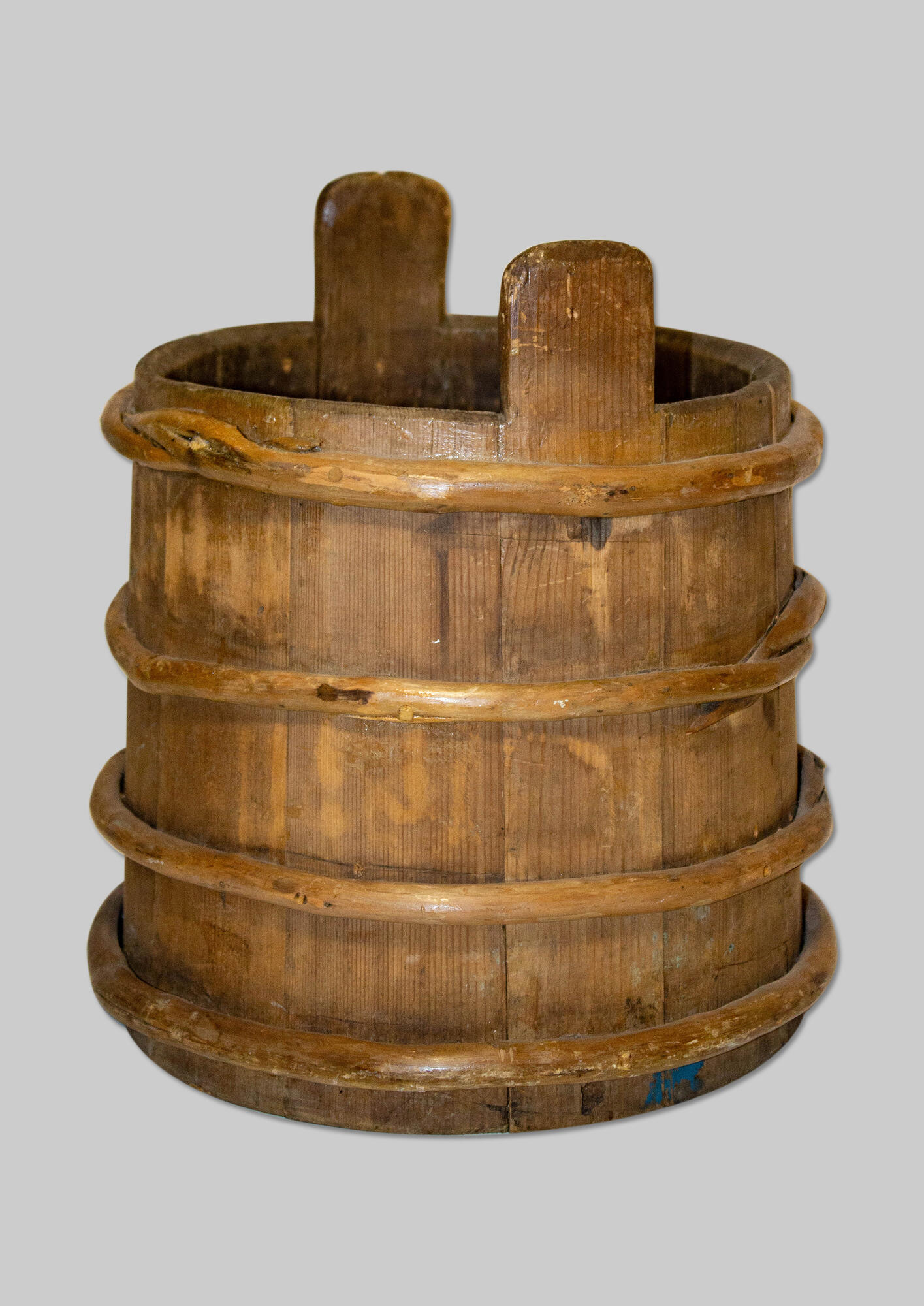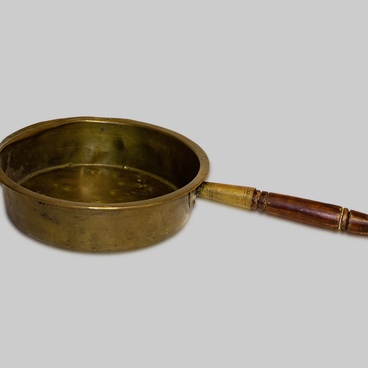In Russian, there is a well-known idiom: ‘to pour a vat of cold water on someone.’ A vat (Russian: vat) is a large wooden tub with two handles (‘ears’, ‘Ushi’ in Russian) protruding upwards on opposing sides. This vessel was traditionally used to carry and store water. The vat often had two round holes in the handles, through which a stick was put for carrying. The handles served a double purpose: they allowed the tub to be closed tight and to be carried to a different place if needed.
The vat was carried in the following manner: a pole was put through the ears, its ends were placed on the shoulders of two people, who carried the tub together. Unlike a bucket, the vat can only be moved by two people, so it could hold much more water than a regular bucket. Lifting it on to one’s shoulders was not an easy job. In time, a device with which the vat could be carried without raising it high above the ground came into use. A short chain called catch chain was attached to the pole. Loose end of the catch chain was attached in the middle to a shorter pole. The shorter pole was put through the ears of the vat, while the long one was placed on the shoulders in such a way so that vat would be hanging on the catch chain not far from the ground, while being carried.
Cooperage is making of containers for stage and transport of liquids and loose goods out of timber staves. No one knows where, how and when cooper made houseware first appeared, but it already existed in Ancient Greece and the Roman Empire. Greeks and Romans used large barrels to transport and store oil, whine and water. Archaeologists have found a large barrel two meters high in Hungary, which used to be part of the northern provinces of the Roman Empire. Its staves are made of pine.
Wood working, including coopery, was a traditional craft of the Slavs. Cooper-made houseware made between the tenth and fifteenth centuries was found by archaeologists in ancient Novgorod and restored from the discovered parts: staves, hoops and bottoms. Novgorod coopers made their vats, buckets and tubs mainly from pine wood. Ancient craftsmen made barrels, tubs, buckets, washbasins, wooden jugs, mugs and other items. Some of the ancient cooper’s produce found by archaeologists has survived almost unchanged.
The vat was carried in the following manner: a pole was put through the ears, its ends were placed on the shoulders of two people, who carried the tub together. Unlike a bucket, the vat can only be moved by two people, so it could hold much more water than a regular bucket. Lifting it on to one’s shoulders was not an easy job. In time, a device with which the vat could be carried without raising it high above the ground came into use. A short chain called catch chain was attached to the pole. Loose end of the catch chain was attached in the middle to a shorter pole. The shorter pole was put through the ears of the vat, while the long one was placed on the shoulders in such a way so that vat would be hanging on the catch chain not far from the ground, while being carried.
Cooperage is making of containers for stage and transport of liquids and loose goods out of timber staves. No one knows where, how and when cooper made houseware first appeared, but it already existed in Ancient Greece and the Roman Empire. Greeks and Romans used large barrels to transport and store oil, whine and water. Archaeologists have found a large barrel two meters high in Hungary, which used to be part of the northern provinces of the Roman Empire. Its staves are made of pine.
Wood working, including coopery, was a traditional craft of the Slavs. Cooper-made houseware made between the tenth and fifteenth centuries was found by archaeologists in ancient Novgorod and restored from the discovered parts: staves, hoops and bottoms. Novgorod coopers made their vats, buckets and tubs mainly from pine wood. Ancient craftsmen made barrels, tubs, buckets, washbasins, wooden jugs, mugs and other items. Some of the ancient cooper’s produce found by archaeologists has survived almost unchanged.



